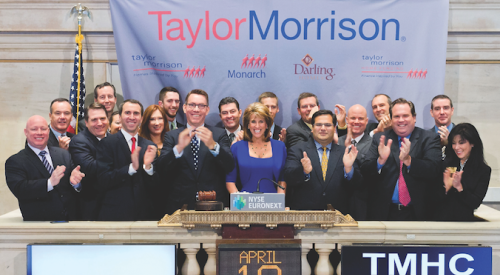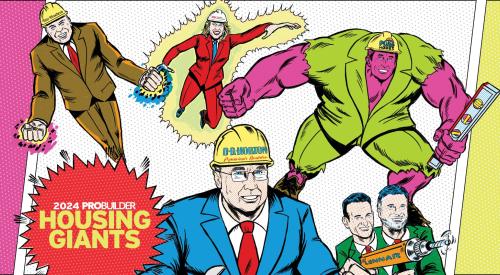|
We separated our GIANT 400 into revenue categories last year to show just how much these home builders differ from one another. Massive, publicly held powerhouses at the top of the rankings differ from even the big privately held builders, and both groups differ radically from the bulk of local production builders. The latter have more in common with the small builders that make up the housing industryÆs rank and file than with the gargantuan national corporations at the pinnacle.
Check out the market share and revenue charts in Related Information, and itÆs easy to see that consolidation is a fact of life and that the top 20 firms really are Masters of the Universe. In 2003, the GIANT 400 reached an all-time high of 34.7% of total U.S. housing completions, up from 19.4% a decade ago, and the 20 Masters accounted for 55.2% of the housing revenue amassed by the entire GIANT 400, compared with 16.1% for the 275 firms that make up the Achievers and Strivers segments.
However, one aspect of the GIANT 400 remains constant: fluidity. Nothing is set in stone, including the Masters of the Universe. For the third successive year, thereÆs a new No. 1. Hard-charging D.R. Horton Inc. is the new top dog, supplanting Pulte Homes Inc., which slipped to No. 2. In 2002, Pulte became the first builder to top $7 billion in housing revenue. Last year, Horton, Pulte and Lennar Corp. each topped $8 billion. If you want to be No. 1 in the 2005 GIANT 400, better set your 2004 revenue bar at $10 billion ù and donÆt look down.
|
Keep in mind that at the beginning of the last decade, D.R. Horton was a small local builder in Fort Worth, Texas, and even in 1993, the newly public company ranked only No. 41, on revenue of $182.6 million.
Near the bottom of the Masters, wars rage to keep a toehold in the galaxy. Small-cap public companies were the big winners. M/I Homes topped $1 billion in revenue for the first time to hang on at No. 20. The North American arm of Taylor Woodrow, the public British behemoth, pushed revenue past $1.1 billion and made the biggest move, from No. 26 to 19.
Companies near the bottom of any of the four categories are always in danger of slipping, even with rising revenue. But the private firms fighting for the last seat on the Masters rocket were especially disadvantaged this year because so many public companies, flush with other peopleÆs money, were just out of the top 20 a year ago. So David Weekley Homes slipped from No. 20 into the ranks of the Rich and Famous at No. 22, even though the firm closed nearly 500 more houses in 2003 and increased revenue from $855 million to $948.6 million. It now takes $1 billion to be a Master of the Universe.
The top five builders ù D.R. Horton, Pulte, Lennar, Centex Corp. and KB Home ù have become so much larger than everyone else that they threaten to create a supernova group of their own. The revenue gap between KB and No. 6 NVR Inc. is now more than $2 billion, and KB had 27,331 closings in 2003 compared with NVRÆs 12,050. Moreover, NVR shows little interest in the acquisitive growth that trademarks the Big Five.
However, we wonÆt believe that the Big Five really are different from the rest of the Masters until they convince Wall Street by creating a gap in return on invested capital and earnings multiples as well as units and revenue. So far, the biggies havenÆt proved they have an advantage on the bottom line.












